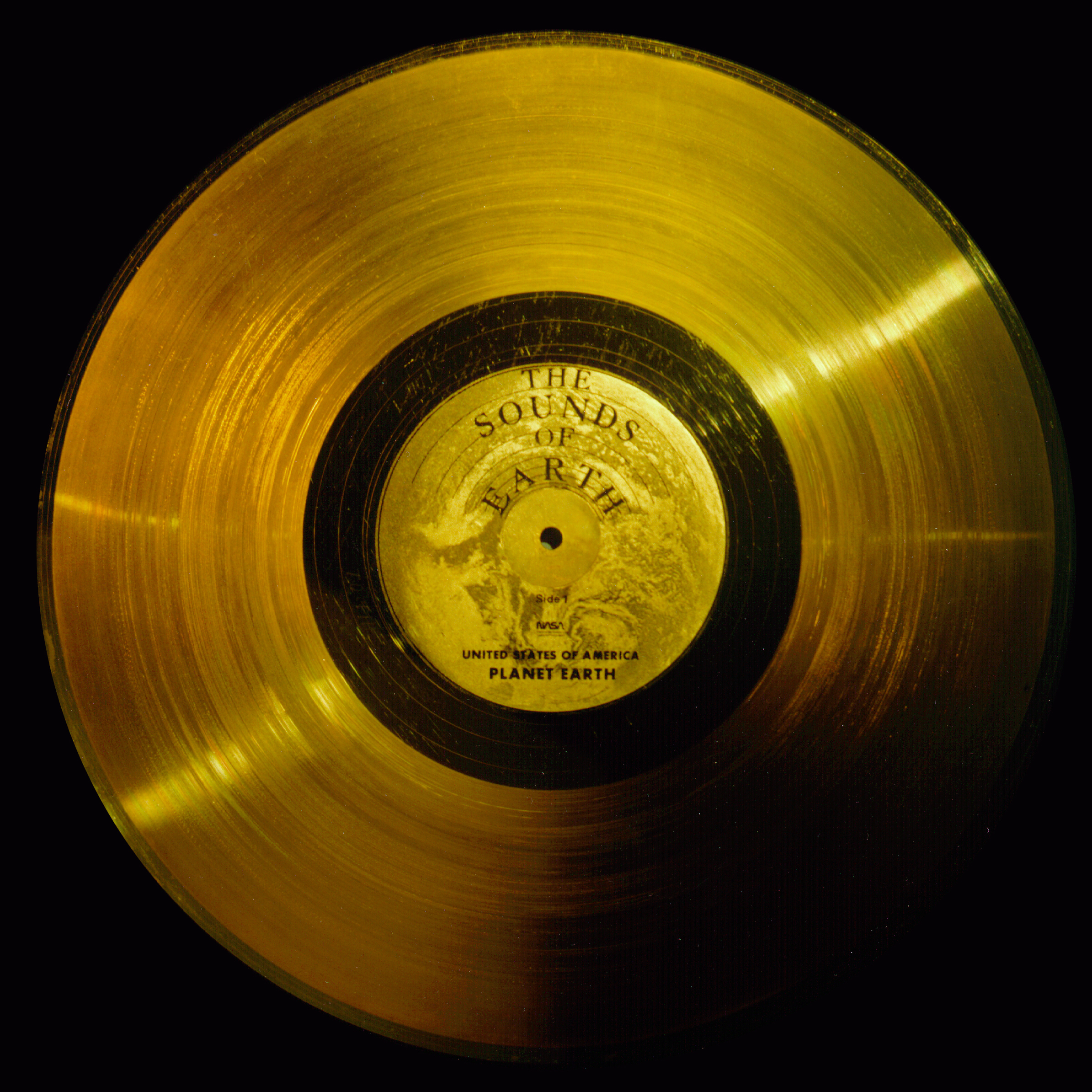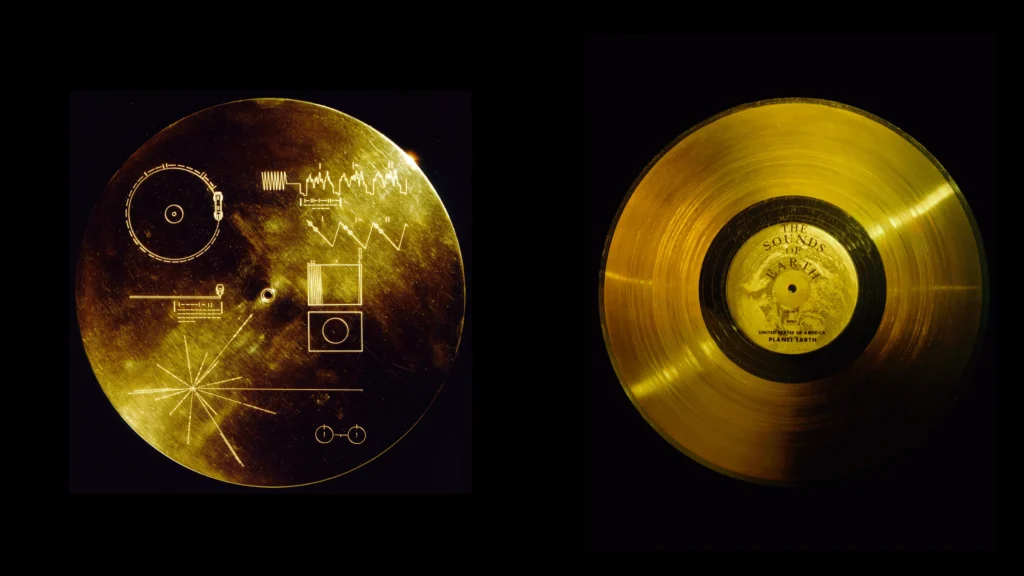The Golden Records Tell the Story of Earth — Will Alien Worlds Ever Find Them?

In 1977, as NASA launched the twin Voyager spacecraft on their historic journey to the outer planets—and beyond—it also sent with them a unique message in a bottle: the Golden Records. Designed as a kind of cosmic time capsule, these 12-inch, gold-plated copper phonograph records contain the sights, sounds, languages, and music of Earth. The goal? To tell the story of humanity and our planet to any intelligent extraterrestrial life that might one day discover them.
Now, nearly five decades later, as Voyager 1 and 2 continue their lonely voyage through interstellar space, the question remains: Will alien worlds ever find the Golden Records—and if they do, what will they think of us?
What Are the Golden Records?
The Golden Records are one of the most ambitious and poetic projects ever undertaken by a space agency. Each record is a gold-coated disc housed in an aluminum cover, engraved with instructions (using symbolic language and diagrams) on how to play it, as well as a map showing the location of Earth relative to 14 pulsars—an astronomical “address” in space.
The contents were curated under the guidance of astronomer Carl Sagan and a small team of scientists, artists, and thinkers. They selected more than 100 images, a variety of natural and human-made sounds, greetings in 55 languages, and 90 minutes of global music, including Bach, Beethoven, a Navajo night chant, traditional Chinese zither, Senegalese percussion, and Chuck Berry’s “Johnny B. Goode.”
There’s also a message from then-U.S. President Jimmy Carter, who wrote:
“This is a present from a small distant world, a token of our sounds, our science, our images, our music, our thoughts and our feelings. We are attempting to survive our time so we may live into yours.”
Where Are the Voyagers Now?
- Voyager 1, launched on September 5, 1977, is now the farthest human-made object from Earth, more than 15 billion miles away. It entered interstellar space in 2012.
- Voyager 2, launched earlier on August 20, 1977, followed a slightly different path but also crossed into interstellar space in 2018.
Both spacecraft are still sending data back to Earth, although their power is slowly declining. Within the next few years, all communication with them will likely cease. Then, they will drift silently through the galaxy—each carrying a Golden Record, potentially for billions of years.
What’s on the Record?
The Golden Record was meant to offer a glimpse of life on Earth, with an emphasis on unity, diversity, and peaceful curiosity. Its contents include:
🖼️ Images:
- A DNA double helix
- Human anatomy and reproduction
- Everyday scenes (e.g., children eating, people working)
- Animals, plants, and landscapes
- Mathematical definitions and scientific diagrams
🔊 Sounds:
- Thunder, wind, waves, and birdsong
- A baby crying
- A kiss
- A heartbeat
- Morse code and engine noise
🗣️ Greetings in 55 Languages:
Including Sumerian, Akkadian, Mandarin, Hindi, English, and greetings from the UN Secretary-General and others.
🎵 Music:
- Beethoven’s 5th and 13th string quartet
- Bach’s Brandenburg Concerto
- Peruvian panpipes
- Javanese gamelan
- Aboriginal Australian chants
- Chuck Berry’s “Johnny B. Goode”
The message was meant to be universal, but also deeply human—a portrait of what life is, and what it means to be from Earth.
Could Aliens Ever Find It?
The chances of an alien civilization intercepting either Voyager probe are extraordinarily slim—bordering on impossible. Space is vast beyond comprehension. Even in a galaxy with billions of stars, the odds of Voyager crossing paths with intelligent life are staggeringly low.
However, the Golden Record was never just about reaching aliens. It was also a symbolic act, a gesture of hope, humility, and the desire to connect. As Carl Sagan put it:
“The spacecraft will be encountered and the record played only if there are advanced spacefaring civilizations in interstellar space. But the launching of this ‘bottle’ into the cosmic ocean says something very hopeful about life on this planet.”

The Legacy of the Golden Record
Today, the Golden Records are celebrated as both scientific and artistic achievements. They represent a time when humanity dared to think big—not just about science and exploration, but about meaning, beauty, and our shared identity.
The project has inspired books, documentaries, music albums, and educational programs. A replica of the record is housed in the Smithsonian Institution, and in 2017, a limited-edition vinyl box set was released to the public.
The records endure as one of the purest expressions of interstellar diplomacy—a message not of conquest, but of curiosity and kindness.
The Real Audience: Us
In truth, the most important audience for the Golden Records may never be alien at all. It is us—the people of Earth. They remind us that despite our divisions, we are one species on one fragile planet, capable of creation, compassion, and imagination.
The Golden Records were made in an era of geopolitical tension (the Cold War), yet they reflect a dream of unity across space and time. They challenge us to be worthy of the message we’ve sent into the cosmos.
Conclusion
Whether or not any extraterrestrial civilization ever finds the Voyager Golden Records, they remain one of humanity’s most profound and poetic gestures. Floating through the cold silence of interstellar space, they carry with them a voice—our voice—whispering across the stars: “This is who we are.”




